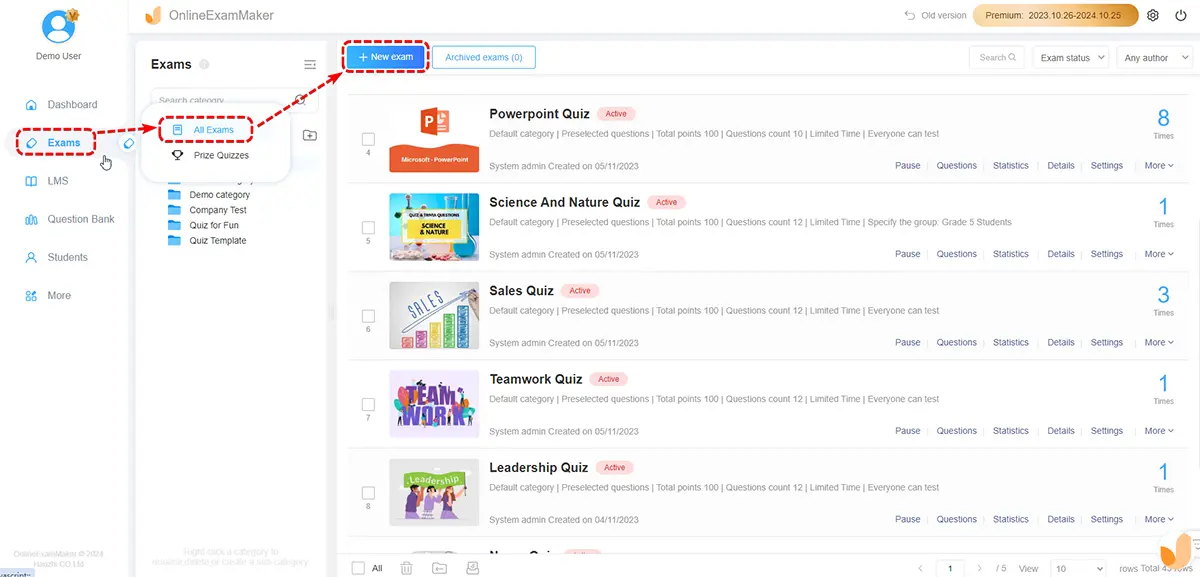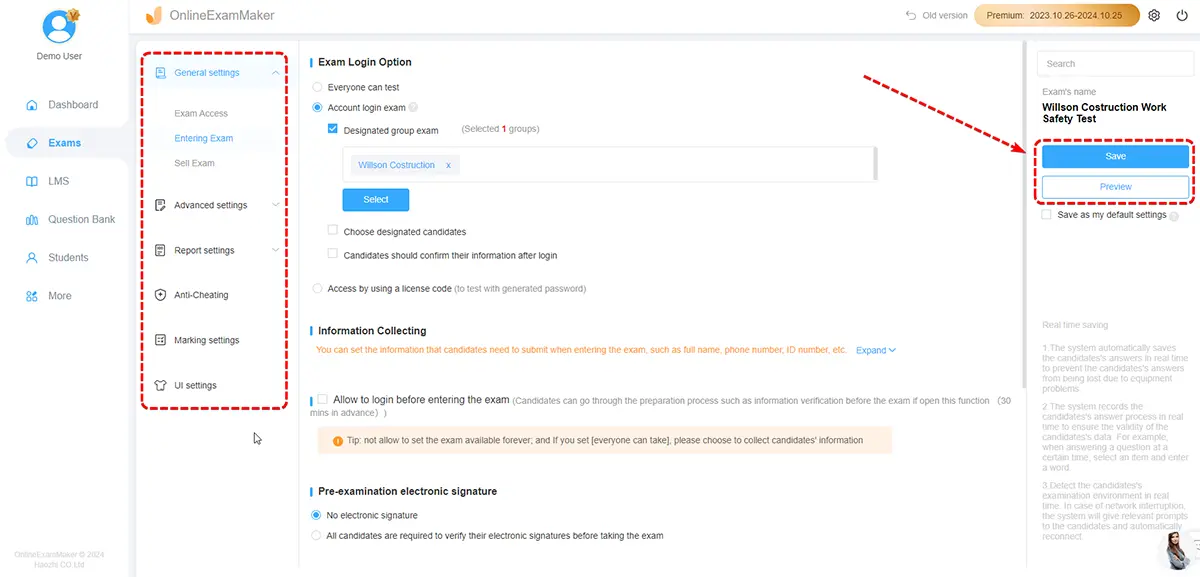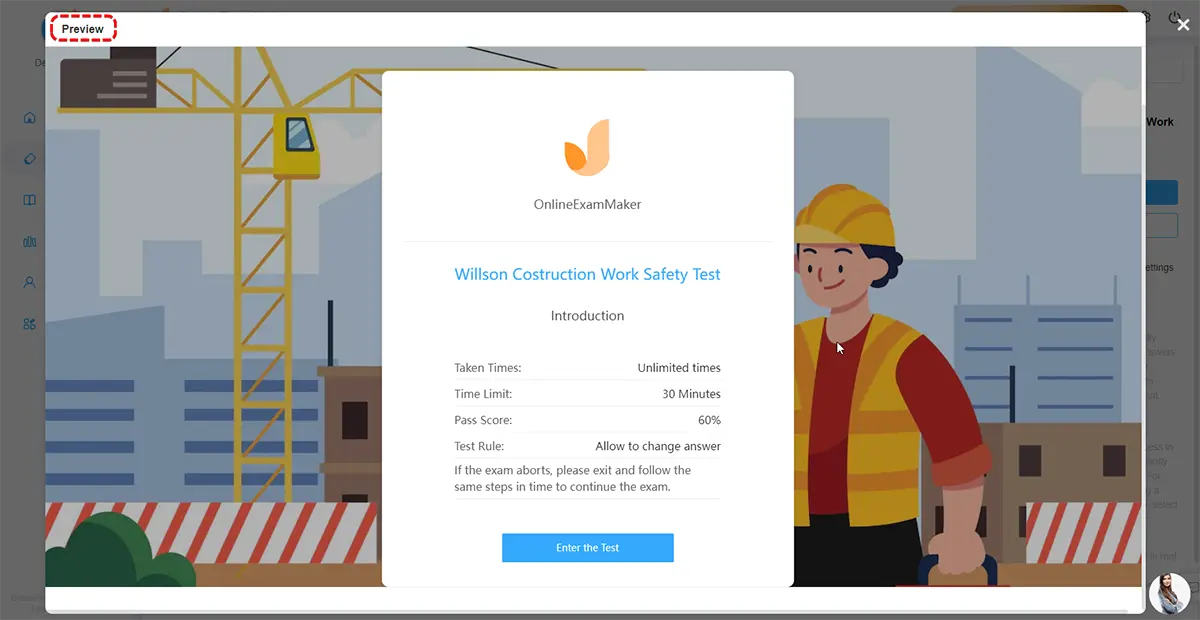Workplace safety is a paramount concern for organizations, and ensuring that employees are well-versed in safety protocols and practices is crucial. Traditional methods of assessing work safety knowledge often involve passive learning through lectures or written tests. However, in today’s dynamic work environments, interactive assessments have proven to be more engaging and effective.
Why a work safety assessment is important for companies?
Employee Well-Being: The most fundamental reason for conducting work safety assessments is to ensure the health and well-being of employees. Safety assessments identify potential hazards and risks in the workplace, allowing companies to take preventive measures to protect their workforce from accidents and injuries.
Legal Compliance: Laws and regulations mandate that employers provide a safe working environment for their employees. Conducting regular safety assessments ensures that the company is compliant with these legal requirements, reducing the risk of legal penalties and liabilities.
Reducing Workplace Accidents: Safety assessments help identify potential hazards and unsafe practices before they lead to accidents or injuries. By addressing these issues proactively, companies can reduce the frequency and severity of workplace accidents, leading to fewer worker compensation claims and insurance costs.
Pro Tip
You can build engaging work safety quizzes with our free online quiz maker.
Enhancing Productivity: When employees feel safe and confident in their work environment, they are more likely to be productive and focused. A safe workplace reduces employee stress and anxiety about potential hazards, allowing them to concentrate on their tasks and perform at their best.
Cost Savings: Workplace accidents and injuries can result in significant financial costs for a company. These costs include medical expenses, worker compensation claims, legal fees, and potential fines. By preventing accidents through safety assessments, companies can save money and protect their bottom line.
- Part 1: 5 Ideas for Making an Interactive Work Safety Assessment
- Part 2: OnlineExamMaker: Best Safety Assessment Tool for Companies
- Part 3: Step-by-step Guide to Make A Work Safety Assessment with OnlineExamMaker

5 ideas for making an interactive work safety knowledge assessment
Idea 1: Gamified Quizzes
One innovative way to assess work safety knowledge is through gamified quizzes. Traditional safety quizzes can be transformed into engaging games by incorporating elements like competition, rewards, and interactivity. This approach not only tests employees’ knowledge but also makes learning fun and competitive.
Gamified quizzes are particularly effective for engaging employees who might find traditional assessments mundane. Incorporate features such as leaderboards, time limits, and scoring systems to create a competitive atmosphere. Sample questions might include scenarios like “What should you do in the event of a chemical spill?” or “How should you handle a workplace fire emergency?”
The benefits of gamification in safety assessments are manifold. It motivates employees to actively participate and challenges them to apply their knowledge in practical scenarios. Moreover, it provides instant feedback, helping individuals identify areas where they need improvement.
Idea 2: Scenario-Based Simulations
Scenario-based simulations are a powerful way to assess work safety knowledge by immersing employees in realistic workplace situations. Unlike traditional tests, these interactive assessments require employees to make decisions and take actions as they would in real-life scenarios.
For example, employees could be presented with a simulated workplace accident and must navigate through a series of decisions to address the situation. This not only tests their knowledge of safety protocols but also their ability to apply them under pressure.
Scenario-based simulations foster critical thinking and problem-solving skills, enabling employees to understand the practical implications of safety guidelines. Additionally, they allow employers to evaluate decision-making skills and the effectiveness of safety training.
Idea 3: Virtual Reality (VR) Training
Virtual reality (VR) technology has revolutionized the way we learn and assess work safety knowledge. VR-based assessments offer an immersive experience that simulates real workplace situations. Employees can interact with their environment, practice safety protocols, and make decisions in a risk-free setting.
Using VR, organizations can recreate scenarios such as operating heavy machinery, responding to chemical spills, or navigating confined spaces. This hands-on approach enables employees to experience the challenges of their work environment without physical risks.
Implementing VR-based assessments requires investment in appropriate equipment and software, but the benefits are substantial. Employees receive practical training and assessments that closely mimic their work conditions, enhancing their preparedness and competence in real-life situations.

Idea 4: Interactive Workshops and Drills
Interactive workshops and safety drills offer a hands-on approach to work safety knowledge assessment. These sessions provide employees with opportunities to practice safety procedures, respond to emergencies, and collaborate with their colleagues in a controlled environment.
Organizations can organize workshops and drills on topics like fire safety, first aid, or hazardous materials handling. Employees actively participate in simulations and learn by doing. They can apply their knowledge to solve problems and address challenges as a team.
The advantages of interactive workshops and drills are numerous. They promote teamwork, build confidence, and reinforce the importance of safety protocols. Additionally, these sessions offer immediate feedback and the opportunity for employees to ask questions and seek clarification.
Idea 5: Gamification of Workplace Safety Policies
One often-overlooked aspect of work safety knowledge assessment is ensuring that employees understand and adhere to workplace safety policies and guidelines. Organizations can transform these policies into interactive games or simulations to make them more engaging and memorable.
For example, employees can participate in a virtual “Safety Policy Adventure” where they navigate through different scenarios, each presenting a safety policy challenge. They must make decisions based on the policies, and their choices have consequences within the game.
This approach ensures that employees not only read the safety policies but also comprehend and apply them. Gamification encourages employees to explore and understand workplace safety guidelines thoroughly.
OnlineExamMaker: Best Safety Assessment Tool for Companies
With OnlineExamMaker quiz maker, HR & company managers can easily create, customize, and distribute work safety knowledge assessment with just a few clicks. The intuitive interface provides a range of question types, including multiple-choice, true or false, fill in the blank, and open-ended questions, enabling users to make professional assessments that suit their specific needs.
Key Features
Public Exam: No registration required, anyone on the internet with the link can take the exam.
Quiz on Mobile: Take an online exam on any devices, including mobile phone, tablet, laptop, desktop. Support users to scran a QR code to enter the online exam.
Shuffling Question Option: The order of sections, pages, questions and choices in the exam is shuffled.
Create Your Next Quiz/Exam with OnlineExamMaker
Step-by-step Guide to Make A Work Safety Assessment with OnlineExamMaker
Step 1: Sign in to OnlineExamMaker >
Step 2: Create a new test, then set quiz settings.

Step 3: Setting scoring, Define how many points each question is worth.

Step 4: Preview the quiz to ensure everything looks and functions as you expect, the click “Publish” button.

Conclusion
Assessing work safety knowledge is an essential aspect of maintaining a safe and productive workplace. Traditional methods can sometimes fall short in engaging employees and ensuring they truly understand and apply safety protocols. By incorporating interactive assessments such as gamified quizzes, scenario-based simulations, virtual reality training, interactive workshops and drills, and gamification of workplace safety policies, organizations can create more engaging and effective ways to assess work safety knowledge.
These innovative approaches not only improve employee engagement but also lead to a deeper understanding of safety practices and a stronger commitment to maintaining a safe work environment. Investing in interactive work safety knowledge assessments can ultimately contribute to a safer and more productive workplace for all employees.